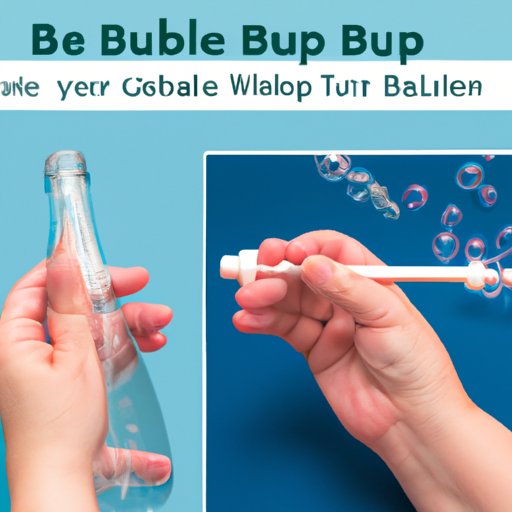
Introduction
Have you ever tried to blow bubbles at home but failed miserably, leaving you frustrated and disappointed? Bubbles are fascinating, but creating them can be challenging. This article provides a comprehensive guide on making bubbles at home.
Step-by-Step Guide on Making Bubbles
The first step in making bubbles is to gather all the ingredients. All you need is water, dish soap, and glycerin. Combine the ingredients in a bowl and stir gently. Remember not to foam the mixture. Next, dip your bubble wand into the solution and blow gently. Voila! You have perfect bubbles.
It is crucial to ensure that the soap-to-water ratio is accurate. Too much soap will create a solution that is too thick, while too much water will result in weak bubbles that burst quickly. To make bubble making an enjoyable experience, consider adding food coloring to your bubble solution to make colorful bubbles. Lastly, do not over-stir the mixture; this will cause the solution to foam and create too many small bubbles that do not last long.
Experiment with Ingredients
While dish soap and glycerin are the most common ingredients used to make bubbles, many other alternatives can be used. Body wash, shampoo, and even corn syrup can be used instead of dish soap. Adding sugar to your solution will help increase their lifespan. Glycerin is not necessary, but it does make the bubble solution more durable, which is essential for giant bubbles. Some people use guar gum as a substitute for glycerin. However, its effectiveness depends on the brand and quality.
Another ingredient you can use is baking powder, which is an excellent alternative for glycerin. To create a bubble solution with baking powder, mix six cups of water with one cup of dish soap, four tablespoons of glycerin, and eight tablespoons of baking powder. Mix the solution gently and let it sit overnight before using it. This bubble solution will produce long-lasting bubbles for a fun bubble blowing session.
DIY Bubble Wands
While bubble wands are readily available in stores, creating your bubble wand is an easy and fun DIY project that will only take a few minutes. The first method requires pipe cleaners. Take two pipe cleaners and twist them in your desired shape. Make sure to leave enough of one end unfolded to hold the bubble solution. The second option involves making a wand from wire hangers. Cut the wire hanger to form a circle. You can shape the circle into a shape of your choice. Lastly, you can use straws to make a bubble wand. Bend two straws into the desired shape and connect them using a thin piece of wire.
The bubble wand you choose will directly affect the bubble’s size and shape. For instance, a heart-shaped wand will create heart-shaped bubbles, while a square wand will create square-shaped bubbles. The openings of the wand are vital in making bubbles. The smaller the opening, the smaller and more delicate the bubbles will be.
Bubble Tricks
Bubble art is a popular form of entertainment that can be enjoyed by both children and adults. To create bubble sculptures, use a straw to blow bubbles, then direct the wand to the desired position. You can get creative with your bubble art by adding food coloring or using bubbles with various sizes and shapes. Another fun bubble trick is creating giant bubbles. Expandable wands are essential in creating giant bubbles. Once you have the solution ready, dip the wand in slowly and raise carefully. Lastly, if you want to create colored bubbles, add food coloring to the solution before blowing the bubbles.
Science of Bubbles
Bubbles are fascinating, and learning about the science behind them can be enlightening. Bubbles have a sphere-like shape due to surface tension. The surface tension is created by the attraction between molecules, and it is caused by the imbalances generated by the attraction and repulsion forces.
Bubbles are essential in science and everyday life. They are used in medical equipment and cleaning agents. Bubbles also play a vital role in the environment. They help maintain the oxygen levels in the water, which is essential for aquatic animals.
Conclusion
Creating bubbles at home can be fun and interesting. Start by experimenting with different ingredients and create your DIY bubble wands. Enjoy the amazing world of bubbles by learning the simple yet fascinating tricks that you can try on your own. Remember, making bubbles is not only fun but also educational as it teaches us about science and its applications in everyday life.




